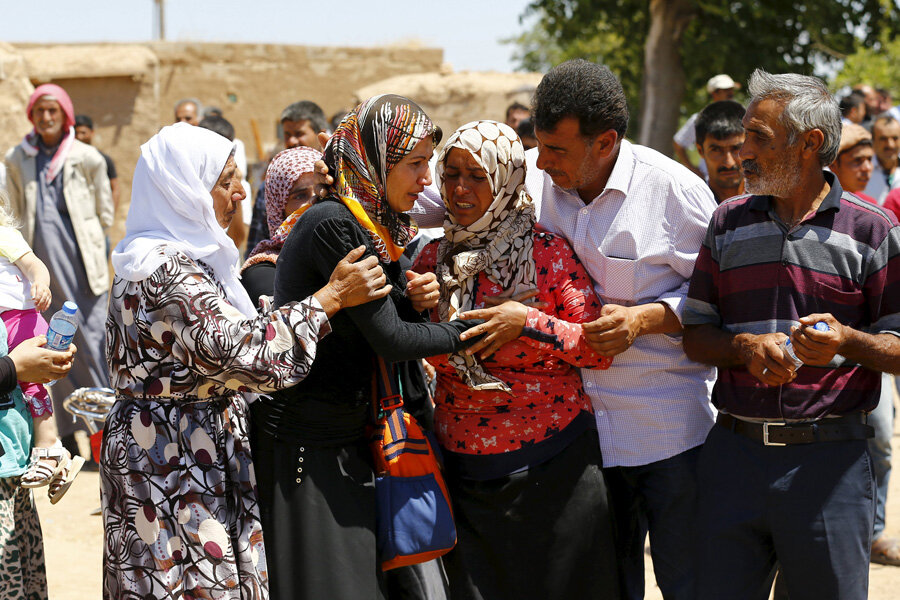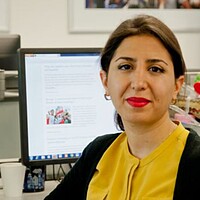ISIS 'kills at least 146 civilians' in Kobane, activists say
Loading...
Islamic State militants have killed “at least 146” civilians in the last 24 hours in the Syrian city of Kobane and the surrounding countryside, activists say.
The Syrian Observatory for Human Rights, a British-based organization that tracks the war, says it could document the death of at least 120 civilians in the northern city itself, among which, according to the report, there are “dozens” of children, women and elderly people.
There are reports that some of the Islamic State militants were disguising their identity, wearing Kurdish militia uniforms when entering Kobane on Thursday.
“My mother, father, brother, sister in law, and niece were killed,” Emina Ahmed, who left the city for the nearby city of Suruc in Turkey, told The Christian Science Monitor. “They were beheaded by IS militants who came dressed in the uniforms of the (Kurdish) YPG.”
Another witness, seven-year-old Silva Sheikh, said she witnessed gunmen entering her home in Kobane and killing her parents and grandparents. She managed to escape to her aunt's home in Suruc with five of her younger siblings.
Some of the Kobane casualties were taken to Suruc hospitals. A local official told the Monitor Thursday that they have received five dead and 138 wounded.
Last January, Kurdish forces, backed by US and coalition airstrikes, drove Islamic State militants out of Kobane after a famous months-long resistance. Since then, the battle for Kobane became a symbol of Kurdish defiance against the extremist group.
But now, Islamic State fighters have re-entered the city and as The Syrian Observatory for Human Rights says, has carried out the “second-largest massacre” of civilians since it declared an alleged caliphate last June.
In another separate operation on Thursday, the Islamic State also attacked the northeastern Syrian city of Hassakeh.
The United Nations said Friday the attack on Hassakeh displaced 60,000 people.
"An estimated 200,000 people may try to flee the city in the coming hours to northern areas of the governorate, most likely towards Amuda and Qamishli," the report added. Qamishli and Amuda are close to Syria’s northern border with Turkey.
Thursday's attacks came after the Islamic State group suffered several defeats in northern Syria at the hands of Kurdish forces over the past weeks, including the capture of the strategic Syrian border town of Tel Abyad in mid-June.
Since the outbreak of armed conflict in Syria in 2011, more than 200,000 people have lost their lives and more than 11 million have been forced from their homes seeking refuge in neighboring countries.






